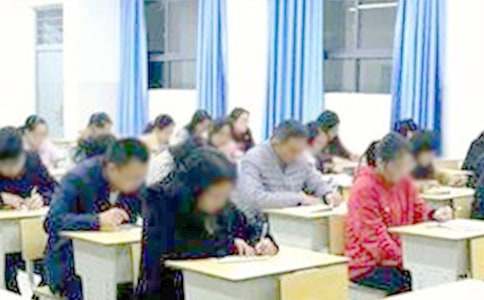- 相關(guān)推薦
2017年托福聽力考試模擬題及答案
導(dǎo)語:做習(xí)題是提高托福聽力成績的最佳方法,下面是YJBYS小編整理的2017年托福聽力考試模擬題及答案,希望對你有幫助!

Matching the influx of foreign immigrants into the larger cities of the United States during the late nineteenth century was a domestic migration, from town and farm to city, within the United States. The country had been overwhelmingly rural at the beginning of the century, with less than 5 percent of Americans living in large towns or cities. The proportion of urban population began to grow remarkably after 1840, increasing from 11 percent that year to 28 percent by 1880 and to 46 percent by 1900. A country with only 6 cities boasting a population of more than 8,000 in 1800 had become one with 545 such cities in 1900. Of these, 26 had a population of more than 100,000 including 3 that held more than a million people. Much of the migration producing an urban society came from smaller towns within the United States, but the combination of new immigrants and old American "settlers" on America's "urban frontier" in the late nineteenth century proved extraordinary.
The growth of cities and the process of industrialization fed on each other. The agricultural revolution stimulated many in the countryside to seek a new life in the city and made it possible for fewer farmers to feed the large concentrations of people needed to provide a workforce for growing numbers of factories. Cities also provided ready and convenient markets for the products of industry, and huge contracts in transportation and construction — as well as the expanded market in consumer goods — allowed continued growth of the urban sector of the overall economy of the Untied States.
Technological developments further stimulated the process of urbanization. One example is the Bessemer converter (an industrial process for manufacturing steel), which provided steel girders for the construction of skyscrapers. The refining of crude oil into kerosene, and later the development of electric lighting as well as of the telephone, brought additional comforts to urban areas that were unavailable to rural Americans and helped attract many of them from the farms into the cities. In every era the lure of the city included a major psychological element for country people: the bustle and social interaction of urban life seemed particularly intriguing to those raised in rural isolation.
1. What aspects of the United States in the nineteenth century does the passage mainly discuss?
(A) Technological developments
(B) The impact of foreign immigrants on cities
(C) Standards of living
(D) The relationship between industrialization and urbanization
2. The word "influx注入,涌入" in line 1 is closest in meaning to
(A) working
(B) processing 調(diào)整,加工,處理,沖洗,理賠,工藝設(shè)計…
(C) arrival
(D) attraction
3. The paragraph preceding the passage most probably discuss
(A) foreign immigration
(B) rural life
(C) the agricultural revolution
(D) famous cities of the twentieth century
4. What proportion of population of the United States was urban in 1900?
(A) Five percent
(B) Eleven percent
(C) Twenty-eight percent
(D) Forty-six percent
5. The word "extraordinary不平常的,特別的" in line 12 is closet in meaning to
(A) expensive
(B) exceptional
(C) supreme
(D) necessary
6. The phrase "each other" in line 13 refers to
(A) foreign immigrants and domestic migrants
(B) farms and small towns
(C) growth of cities and industrialization
(D) industry and transportation
7. The word "stimulated" in line 14 is closest in meaning to
(A) forced
(B) prepared
(C) limited
(D) motivated
8. Why does the author mention "electric lighting" and "the telephone" in line 23?
(A) They contributed to the agricultural revolution
(B) They are examples of the conveniences of city life
(C) They were developed by the same individual.
(D) They were products of the Bessemer converter.
9. The word "them" in line 25 refers to
(A) urban areas
(B) rural Americans
(C) farms
(D) cities
10. The word "era" in line 25 is closest in meaning to
(A) period of time
(B) location
(C) action
(D) unique situation
11. The word "intriguing有吸引的" in line 27 is closest in meaning to
(A) profitable
(B) attractive
(C) comfortable
(D) challenging
答案:
DCADB CDBBAB
【托福聽力考試模擬題及答案】相關(guān)文章:
托福聽力考試07-25
托福聽力考試常見詞匯03-18
新托福聽力考試詞匯10-18
如何突破托福聽力考試05-25
托福聽力考試高分技巧10-14
托福聽力口語考試技巧08-08
出國考試:新托福聽力如何利用場景猜出答案09-23
托福聽力考試常見詞匯201707-17
2017托福聽力考試常見詞匯07-29
托福聽力考試高頻詞匯08-10